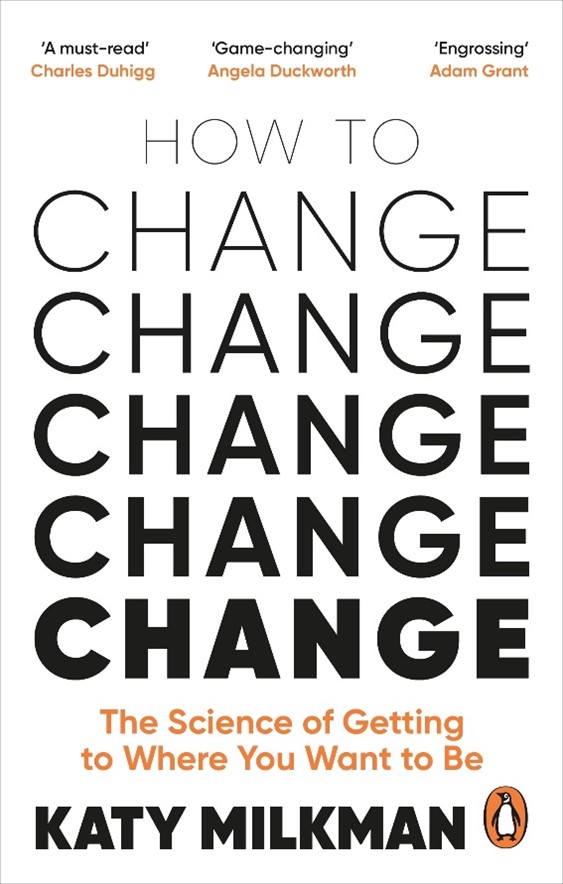
How many times have you ‘implemented’ a health or safety initiative, only to find out weeks, months or years later, that it stopped working?
I recently finished reading a book on change last week and thought l would share some of my key takeaways. It got me thinking about how l could apply these learnings to organisational change, particularly when designing or implementing a safety initiative/project.
Katy Milkman’s book “How to Change” offered valuable insights into understanding components of human behaviour and provided useful examples of strategies that could be used for transformation.
To keep this post as short as possible, I’ve focused on only a handful of the “nuggets” – there many more than l have included below.
-
Understanding human behaviour
The author’s research emphasises the importance of understanding human behaviours and the associated decision-making processes. Similarly, implementing a successful health or safety initiative requires a deeper understanding of how individuals and groups perceive change, and then make both conscious & unconscious choices regarding that change. By recognising the various psychological biases and motivations that influence behaviours, you should tailor your approach for a more effective outcome.
The chapter on impulsivity really resonated with me. In particular present bias, which Milkman describes as the tendency to choose instant gratifications over longer term rewards i.e., doing the right thing is unsatisfying in the short term. The question is, what do you include in your longer term goal to help make the change (more) enjoyable, and therefore more likely to be successful.
The other insight for me was the use of gamification. This can improve gratification in the pursuit of goals, but with a condition; when used incorrectly it can backfire if people feel that the change is being imposed on them.
Key takeaways: Make change enjoyable and ensure that end-user buy-in is thoughtfully considered as part of project plans.
-
Leveraging social norms
Social norms play a significant role in shaping human behaviour. The author highlights the power of social influences in driving change. You can capitalise on this insight by fostering, celebrating and reinforcing safety-conscious behaviours. Encouraging all employees to share success stories, recognising and rewarding safe practices, and fostering peer-to-peer accountability can create a strong social norm around health and safety.
Key takeaways: Utilise your organisation’s key influencers to help drive the desired change. Measure, re-enforce and celebrate efforts that support that change – you will get better outcomes by measuring people on results they can directly control or influence.
-
Continuous feedback and measurement
With respect to communication, you should have timely and specific feedback loops. Furthermore, change initiatives have a greater chance of success when they are measured. I’m sure you have heard the saying, “what gets measured – gets done”. Fostering a culture that values and encourages feedback (without fear of repercussions) at all levels of an organisation is critical. It enables individuals to feel safer in sharing their thoughts, ideas and concerns. Consequently, it can improve the likelihood and strength of buy-in to the particular initiative.
Amalgamating my thoughts on gamification, measurement & feedback, my mind immediately goes to apps like Duolingo (a language learning application). In my view, they have done a great job in developing and sustaining users’ habits. They have utilised regular reminder cues, measuring user progress, providing regular feedback on that progress, recognising user success and milestone achievements, and publicly comparing user performance. There are many useful learnings that health and safety professionals could take away from Duolingo’s approach with respect to designing and implementing a safety initiative.
Key takeaways: Measure and talk about the change regularly, while inviting people to provide feedback on how the particular initiative or implementation process could be improved – action that feedback where possible. Also, analyse successful change initiatives and mirror related approaches into your specific project.
-
Leadership
Yes, l know, surprise surprise! Effective leadership is essential for the success of any safety initiative which requires change. It is important that the words of leaders are authentic and supportive. People can see through artificial words like looking through cellophane. Think about times where you have witnessed leaders talk about the importance of health and safety but are not truly genuine. Unfortunately, these words (and leaders) end up being unfavorably discussed during water-cooler conversations. When leaders ‘talk-the-talk’ without ‘walking-the-walk’, they lose credibility, and this can impact change initiatives.
Key takeaways: Your people will remember what you do, more than what you say. Ensure that your words are congruent with your actions and vice versa. It’s better not to say it, if you don’t mean it.
The above is not a comprehensive summary, so l would encourage you to invest some time and read Katy Milkman’s book to discover other nuggets.
Finally, if you have already read this book, l would encourage you to share your key learnings and applications to better health and safety outcomes.
